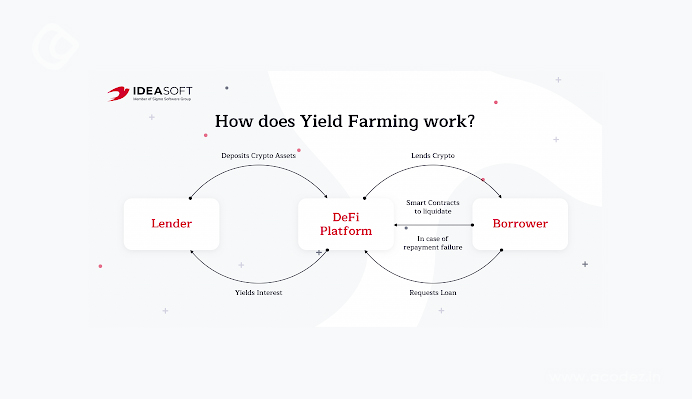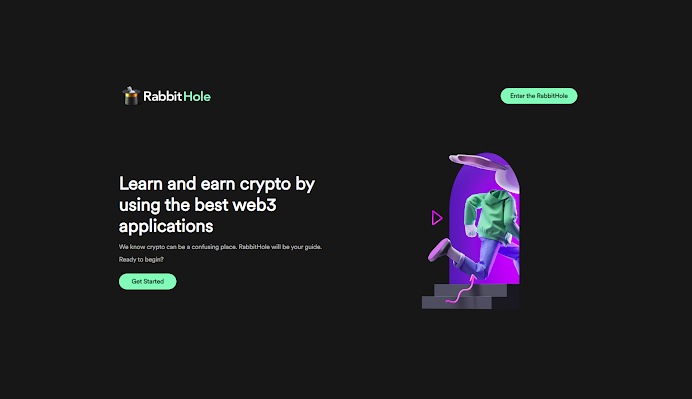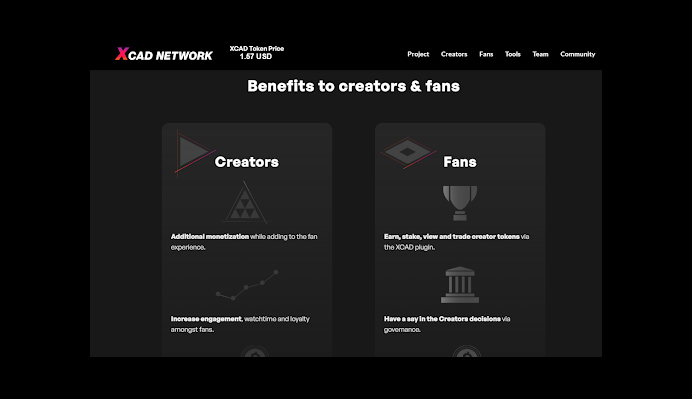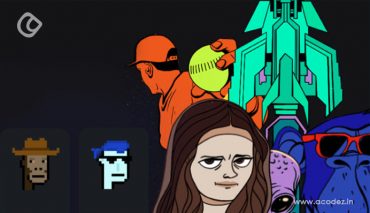In the last few years, the world has progressively shifted from old methods of generating income to a gig economy (free market system). The COVID-19 pandemic intensified this trend, as many sought Web 3.0 for alternative ways of making money.
With the introduction of revenue models such as “X to Earn” or “Anything to Earn” mechanisms into our lives, people now have a plausible response to the question of how to finance our everyday activities.
But, even as we continue to normalize workplace flexibility, a brighter paradigm is taking form, one in which crypto and Decentralized Autonomous Organizations (DAO) occupy a central position.
Along with DAO, people may now make money by doing everyday things like playing video games, studying, developing, publishing, and reviewing.
The x to earn model is shaping GameFi’s brighter beginning, and it has the potential to change the way people play, engage, participate in social activities, develop, and educate.
The movement began with play-to-earn projects like Axie Infinity and Sandbox. It quickly grew into several subdivisions, providing people with new ways to earn money for doing basic things like online gaming or undertaking online classes.
With this in mind, this post serves as a basic overview of the current landscape, assisting you in better understanding the various x to earn or anything to earn blockchain app development models.
Passive Income in DeFi
Before we look at the GameFi-inspired models and how they’re upending the crypto industry’s status quo, let’s first look at the passive income prospects in DeFi.
DeFi is an acronym for “decentralized finance,” which refers to a wide range of financial apps based on bitcoin or blockchain that aim to disrupt financial intermediaries.
DeFi is inspired by blockchain, the technology underpinning the virtual currency bitcoin that enables multiple entities to keep a copy of previous transactions, implying that it is not owned by a centralized system.
Decentralized finance (DeFi) has become a key differentiator in the bitcoin business. It is important to note that blockchain technology is among the causes fueling Decentralized Finance’s continuous growth.
Financial services can now be supplied directly to the public without the need for intermediaries or central authority, thanks to the growth of decentralized networks. According to an Amberdata research report, total value locked (TVL) in DeFi climbed from $601 million at the beginning of 2020 to $239 billion thus far in 2022, an almost 40,000 percent growth.
The DeFi community understands that this is only the beginning of the revolution brought about by decentralized networks, which will reduce the impact of old financial systems.
DeFi Concept – Image Source: Linen Mobile
DeFi has reduced the need for middlemen by utilizing smart contracts and permissionless platforms. It is also worth noting that using incentives to lure potential members to the blockchain environment is one of the advantages of boosting DeFi’s user acceptance.
Ways to Make Passive Income in DeFi
Individuals can generate passive income using cryptocurrencies in many ways, such as yield farming and staking services.
1. Yield Farming
Yield farming, also known as liquidity farming, allows investors to earn a return by depositing coins or tokens in a decentralized environment or decentralized applications (dApps).
How Yield Farming Works – Image Source: IdeaSoft
Cryptocurrency wallets, decentralized crypto exchanges (DEXs), and decentralized social networks are some examples of dApps.
DEXs are commonly used by yield farmers to borrow, loan, or invest coins in order to earn profit and gamble on price volatility. Smart contracts, which regulate financial contracts among two or more entities, promote yield farming via DeFi.
According to CoinMarketCap’s crypto yield farming rankings, the TVL of liquidity pools in yield farming projects is approximately $5 billion.
2. Staking Services
Staking is another popular technique to earn passive income in DeFi.
DeFi staking entails putting one’s cryptocurrency tokens into a smart contract in order to earn additional tokens. Imagine it as the decentralized counterpart of making a fixed deposit investment.
DeFi staking has developed as an extra technique to benefit from your crypto assets since the emergence of bitcoin and DeFi.
Whenever users stake their cryptocurrency asset in a DeFi system, they effectively become validators for the network.
Each solid evidence blockchain technology relies on these validators to ensure the protocol’s security. Staking incentives are provided to someone who has staked a part of their token to help protect the network.
However, as the bitcoin sector grows, a lower barrier of access for new consumers seeking passive income is required.
Users generally find it difficult to navigate the various passive income options in DeFi due to the poor user experience (UX) of DeFi dApps.
With the launch of GameFi, innovative models are emerging to change the existing paradigm as well as provide users with increased passive income prospects.
Now that you’ve learned about DeFi’s passive income opportunities, let’s move on to our main topic: GameFi-influenced models.
X to Earn Blockchain App Development Models
Following the massive popularity of play-to-earn, a slew of new x to earn concepts have emerged.
This tendency has resulted in the emergence of a huge multitude of platforms that, whether effectively or not, try to enable users to monetize a wide range of commonly performed tasks utilizing on-chain incentives.
The most prevalent x to earn models include:
- Play-to-Earn (P2E)
- Move-to-Earn (M2E)
- Stake-to-Earn (S2E)
- Learn-to-Earn (L2E)
- Create-to-Earn (C2E)
- Watch-to-Earn (W2E)
- Participate-to-Earn
Since blockchain-based virtual economies and resource ownership are two main cornerstones of the Web 3.0 era, the x to earn paradigm is widely expected to penetrate many services and goods in the virtual world.
1. Play-to-Earn (P2E)
P2E Model – Image Source: Cryptory
Play-to-earn is a paradigm in which players receive incentives by playing a game and completing specified objectives.
In previous gaming models, in-game currencies held value only within the game; in Web 3.0 gameplay, gamers are paid with tokens that can be traded for fiat currency.
According to Statista, Asia had around 1.48 billion gamers in 2021, making it the leading video gaming market globally, with Europe following suit with 715 million gamers. Globally, an estimated 3.24 billion people play video games.
The above figure, which equates to roughly 42% of the world’s population, is seen to offer significant potential for generating revenue for the people.
The introduction of the P2E paradigm turned all we knew upside down. Almost all of the items we had to buy for us to acquire are now offered to us free of charge via various tasks, in-game activities, or achievements.
Tokens and functioning objects can also be transported from the digital to the real world.
Despite the fact that the P2E model equates our traditional sense of entertainment to a dreary business model, some are willing to make this compromise to profit from activities we humans particularly appreciate and enjoy.
Axie Infinity, a game akin to Pokémon in which users raise digital creatures and fight enemies and other players, is the most emblematic P2E game. SLP (Small Love Potion), an in-game currency (ERC20 token) that can be traded for ETH or real cash, is granted to the champions of these battles.
2. Move-to-Earn (M2E)
M2E Model – Image Source: STEPN
P2E game popularity has brought in new and imaginative ways to incentivize involvement in nearly any everyday activity. Another x to earn strategy, move-to-earn, is a new GameFi category in which apps let individuals make money by remaining active and healthy.
The simple simplification of activities like gaming to a cash flow prompted us all to think about what else could be a new way of generating income.
People love taking action for their health as well as earning money using move-to-earn, which translates physical activity into monetary advantages.
Even though most M2E applications today follow the conventional walking step-counting approach, applications like Menzy concentrate on paying a wide range of physically demanding activities, from jogging to meditation.
Menzy Move-to-Earn Concept – Image Source: Twitter
Simultaneously, you can contest with your colleagues within a specific track or learn from experienced trainers.
Although the above slogan was established almost a year ago, the niche didn’t become prominent until March 2022, when STEPN held its token sale on Binance Launchpad. STEPN is a platform where users may earn tokens for jogging, running, or walking outside.
In the following weeks, the platform surged in terms of value and user data, increasing its market capitalization by more than 7% in less than 24 hours.
3. Stake-to-Earn (S2E)
Stake-to-earn is one of the earliest anything to earn strategies for earning cryptocurrency. It’s a sleep-earning system that just asks you to HODL your bitcoins in your wallet for a set period of time.
Whenever you stake your assets on a platform like Solana, you lock in the coins for a set period. You will be unable to utilize the coins while they are locked in; however, you will retain full possession of the coins.
Your money will be used by the platform to help safeguard the network. Once you stake your coins, they are allocated to validators, who ensure the security of the network by verifying transactions.
Several crypto ventures, like the game PlotX, have successfully exploited the S2E model, resulting in a thriving environment for the community.
The initiative, on the other hand, integrates a number of incentivized models in order to deliver the finest passive income opportunities to its community.
PlotX likewise employs the S2E concept, enabling individuals to stake on its website in order to earn rewards. Staking the $PLOT, the project’s native cryptocurrency can result in annual gains of up to 400%.
PlotX seeks to lower the barrier to entry and has added numerous features that solve a number of the current concerns regarding passive income streams in other digital currencies.
4. Learn-to-Earn (L2E)
Learn-to-earn programs are also becoming more prevalent in Web3. In contrast to the traditional approach in which people pay to learn, the L2E paradigm incentivizes learning.
Individuals gain rewards with most L2E platforms by completing different tasks, including viewing instructional videos or completing on-chain activities in the following L2E platforms.
- RabbitHole: In this platform, users are paid when they execute particular on-chain activities.
L2E Platform – Image Source: RabbitHole
- Coinbase: After watching instructional videos, new members are given a set amount of cryptocurrency.
- Proof of Learn: The platform enables learning in the virtual world through cryptocurrency awards and collectible NFT certifications obtained as on-chain representations of skill improvement.
In this model, individuals learn new abilities and earn tokens for them, cryptosystems attract informed users, and solution providers profit by promoting such connections.
5. Create-to-Earn (C2E)
The number of major businesses and public people utilizing NFT technology has increased significantly in the previous few years.
Because of the success of NFTs, new anything to earn blockchain app development models for making money have emerged. The new create-to-earn platforms enable digital creators to sell their work in the form of an NFT or digital asset.
Decentraland, a virtual landscape populated with consumer parcels of land, on top of which nearly anything can be created, popularized the notion initially.
C2E Model – Image Source: Decentraland
Individuals can develop a wide range of resources for the platform utilizing Decentraland’s known tools, such as buildings, interactive events, gadgets, art pieces, and much more.
In some circumstances, these can be given away, sold on third-party markets, or actively monetized in the application for advertising, gaming, and events.
One could be asking how it differs from the typical method of selling your work for cash. The most noticeable distinction is that one can use several NFT markets to reach a larger audience.
Furthermore, NFTs enable users to receive royalties including on secondary sales.
Given the current surge in popularity in the virtual world, platforms such as The Sandbox, High Street, and others have drawn a lot of attention from developers and creators, who have rushed to these platforms to start building new digital experiences.
Because content ownership is broadly regarded as one of the fundamental pillars of the Web 3.0 age, it is realistic to expect the C2E paradigm to become increasingly common in the next decade, especially with major companies and networks.
6. Watch-to-Earn (W2E)
Watch-to-earn, a business model that makes it possible for individuals to earn digital tokens for viewing videos, is undoubtedly one of the most straightforward x to earn ideas to emerge in the last twelve months.
W2E Concept – Image Source: DollarSprout
The W2E market is currently firmly dominated by one significant operator, XCAD Network. YouTube content providers can use the platform to generate their unique fan tokens and NFT moments, which helps them improve their revenue possibilities and gain exposure.
Fans can earn fan tokens by viewing and participating with material from their favorite creators on the network.
W2E Platform – Image Source: XCAD Network
XCAD Network is unique among x to earn programs in that the prizes it offers are directly proportional to their activity. According to Yahoo, more than 70 content creators have already volunteered to support the project, with more to come.
The platform is already supported by content producers with over 300 million combined members, giving it enormous reach. The XCAD cryptocurrency now has more than $100 million in market capitalization.
XCAD Network serves as the first blockchain-based W2E network; however, the model dates back to the early 2000s, when networks such as Swagbucks and GrabPoints paid users a relatively small sum of money for watching specified videos and advertisements.
The prominent blockchain technology web browser Brave is officially included in the W2E market. However, unlike XCAD Network, its W2E model requires users to opt-in to see additional advertisements in order to start collecting Basic Attention Tokens (BAT) as an incentive.
7. Participate-to-Earn
This is possibly the most pertinent and appropriate category for a large number of Web 3.0 users.
In the participate-to-earn approach, you can hold a particular number of tokens in a platform or Web 3.0 environment to become eligible to join its DAO.
A DAO is in responsible of planning the project’s fate and allocating token supply and allocation. A user will be eligible to exclusive advantages in addition to voting rights merely by purchasing a share in the network.
Users get to partake in the game’s continued prospects, given the fact that they’ve made an active investment in it. Then they will be paid for performing daily tasks in this new x to earn approach.
alsoRead
https://acodez.in/what-blockchain-technology/
Bottom Line
As we’ve highlighted in this piece, the more incentive models arise in the DeFi business, such as x to earn, the faster the percentage of user acceptance and the nearer DeFi gets to replacing traditional finance as the dominant monetary sector.
PlotX and other innovative ventures are aiming to make this a possibility by inventing efficient methods for users to generate passive income.
Though these concepts are currently in the process of acquiring the trust of the majority of society, it appears that when digitalization is complete, it will become a simple act like sleeping (Sleep-to-Earn) and eating (Eat-to-Earn), or even driving (Drive-to-Earn).
The assumption is that Web 3.0 must be more extensively embraced, and individuals must feel confident participating in DAOs when they possess no basic information about other participants. Web 3.0 will distribute earnings potential that was previously concentrated and limited to a small number of individuals.
If you run a business and are seeking innovative ways to digitize your items and store them in light of these developments, then this article will prepare you for the new digital era.
Acodez is a web design company in India offering all kinds of web design and development solutions at affordable prices. We are also an SEO and digital marketing agency offering inbound marketing solutions to take your business to the next level. For further information, please contact us today.
Looking for a good team
for your next project?
Contact us and we'll give you a preliminary free consultation
on the web & mobile strategy that'd suit your needs best.












